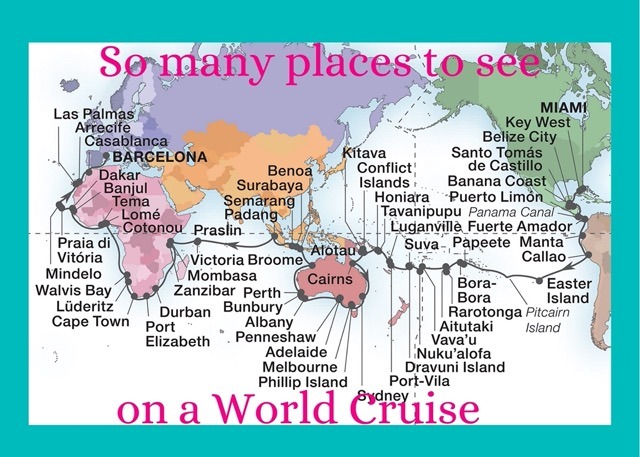Unlocking the Secrets of Closed Loop Cruises: Is a Passport Necessary?
Are you ready to embark on a truly unique and unforgettable vacation experience? Closed loop cruises offer a fascinating opportunity to explore multiple destinations while only requiring a single port of entry. But here’s the burning question: do you really need a passport to enjoy this hassle-free adventure? Join us as we delve into the secrets of closed loop cruises and unravel the mystery surrounding passport requirements. In this comprehensive guide, we’ll walk you through the ins and outs of closed loop cruises, explaining what they are, how they work, and whether a passport is necessary for your journey. So, whether you’re a seasoned traveler or someone looking to dip their toes into the world of cruising, get ready to unlock the secrets and discover the breathtaking destinations that await you on a closed loop cruise. It’s time to set sail on an extraordinary voyage like no other!

Understanding closed loop cruises
What is a closed loop cruise? A closed loop cruise is a type of cruise that starts and ends at the same port. This means that you will board the ship at a specific port, travel to various destinations, and then return to the same port at the end of your journey. Closed loop cruises are popular among travelers who want to explore different places without the hassle of flying or arranging transportation between multiple ports. These cruises provide a convenient and seamless travel experience, allowing you to unpack once and enjoy a variety of destinations.
Benefits of closed loop cruises
Closed loop cruises offer several benefits that make them an attractive option for many travelers. Firstly, they provide a stress-free travel experience. With a closed loop cruise, you don’t have to worry about booking separate flights or organizing transportation between different ports. Everything is taken care of for you, allowing you to relax and enjoy your vacation. Additionally, closed loop cruises often offer a wide range of onboard activities and amenities, ensuring that there is something for everyone to enjoy. Whether you’re a foodie, a thrill-seeker, or someone who simply wants to unwind by the pool, you’ll find plenty of entertainment options on board.
Get more when you travel with us!
Be our VIP! We will share our insider knowledge, give you customized, personalized travel recommendations and get you all the perks!
Call us today!The difference between closed loop and open loop cruises
Now that we understand what closed loop cruises are and their benefits, let’s explore the difference between closed loop and open loop cruises. While closed loop cruises start and end at the same port, open loop cruises involve disembarking at a different port from where you initially boarded the ship. Open loop cruises often require a passport since you are entering a foreign country during your journey. On the other hand, closed loop cruises do not always require a passport because you are returning to the same port of entry. However, it’s important to note that passport requirements can vary depending on the specific cruise itinerary and the countries you will be visiting.
Do you need a passport for a closed loop cruise?
Passport requirements for closed loop cruises
Whether or not you need a passport for a closed loop cruise depends on several factors. First and foremost, it’s essential to check the specific requirements of the cruise line and the destinations you will be visiting. While many closed loop cruises do not require a passport, some cruise lines may still recommend having one, especially if you plan to participate in certain shore excursions or if there is a possibility of a change in the itinerary. Additionally, if you are a non-U.S. citizen, you will need to have a valid passport regardless of whether you are on a closed loop or open loop cruise.

Alternatives to a passport for closed loop cruises
If you’re not keen on obtaining a passport or if you’re unable to do so for any reason, there are alternative forms of identification that may be accepted for closed loop cruises. One option is a government-issued photo ID, such as a driver’s license or a state identification card. However, it’s important to note that while these forms of identification may be sufficient for the cruise line, they may not be accepted by the immigration authorities at certain ports of call. Therefore, it’s crucial to research the specific identification requirements for each destination you will be visiting to avoid any potential issues.
Tips for traveling on a closed loop cruise without a passport
If you decide to embark on a closed loop cruise without a passport, there are a few tips to keep in mind to ensure a smooth travel experience. Firstly, make sure to carry a copy of your birth certificate or other proof of citizenship with you, as this may be required at certain ports of call. It’s also a good idea to bring a government-issued photo ID, such as a driver’s license, to use as identification on the ship. Additionally, it’s important to arrive at the port of embarkation early to allow for any additional security checks or documentation requirements that may be in place. By being prepared and knowledgeable about the identification requirements, you can ensure a stress-free journey on your closed loop cruise.
How to obtain a passport for a closed loop cruise
If you decide that obtaining a passport is the best option for your closed loop cruise, the process is relatively straightforward. The first step is to gather the necessary documents, which typically include a completed passport application form, proof of U.S. citizenship, a government-issued photo ID, and a passport photo. Once you have all the required documents, you can submit your application either in person at a passport acceptance facility or by mail. It’s important to note that the passport application process can take several weeks, so it’s recommended to apply well in advance of your planned cruise departure date. For expedited service, you can pay an additional fee to receive your passport more quickly.
Conclusion
In conclusion, closed loop cruises offer a fantastic opportunity to explore multiple destinations while enjoying the convenience of a single port of entry. While a passport is not always necessary for a closed loop cruise, it’s important to check the requirements of the cruise line and the destinations you will be visiting. It is highly recommended that you take the time to get a passport even if it is not required. If for any reason you get stranded in a foreign port, it would be very difficult to get home without your passport.
If you do decide to travel without a passport, be sure to have alternative forms of identification and research the identification requirements for each port of call. On the other hand, if you choose to obtain a passport, start the application process well in advance to ensure you have it in time for your cruise. Whether you choose to cruise with or without a passport, a closed loop cruise promises an extraordinary journey filled with incredible destinations and unforgettable experiences. So, pack your bags, leave your worries behind, and get ready to set sail on a closed loop adventure of a lifetime! Give your Live Well, Travel Often advisor a call today today to book your cruising adventure!


















